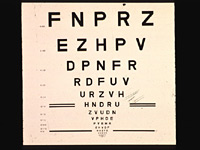|
||||||||||||||||||||||||||||||||||||||||||||
| Optometry 3B - OPTM3211 | ||||||||||||||||||||||||||||||||||||||||||||

Description Objectives: To build on OPTM3111 and to advance student knowledge and stimulate interest in primary care optometry, contact lenses and binocular vision. upon the previous clinical optometry courses and produce a student with good professional attitude, good communication skills and a desire to continue learning, who has the ability to integrate scientific and clinical aspects of optometry and make well-reasoned decisions while undertaking general patient care under supervision of a registered optometrist at the UNSW Optometry Clinic. One focus of this course is to advance student knowledge and technical skills in the integration of four key domains of primary care, namely refraction, binocular vision, oculo-visual assessment and dispensing, particularly regarding use of a problem-based approach to optometric consultations in a clinic environment. The other focus is the field of low vision and catering for the needs of the visually impaired. Both strands will involve lectures, tutorials, practical classes and self-directed learning.
Brief Curriculum: Primary care: clinical laboratories that practice clinical skills in the assessment of normal subjects; Contact lenses: corneal physiology relating to contact lens wear, advanced contact lens fitting, management of the contact lens patient; Binocular vision: assessment of strabismus, amblyopia and anomalous correspondence, AC/A ratio, correspondence and fusion, fixation disparity, stereopsis, control systems analysis; Management of anomalies; Case analysis. working in a consulting room; lens products, tints and coatings, meeting vocational and avocational patient needs in dispensing, frame selection and limitations, glazing, delivery and adjustment of spectacles; optical considerations of the subsidiary effects of spectacle lenses. Low vision – epidemiology of visual impairment, the low vision examination, optics of low vision aids, survey of current low vision aids, adaptive technology, the multidisciplinary mode of practice.
|
||||||||||||||||||||||||||||||||||||||||||||


